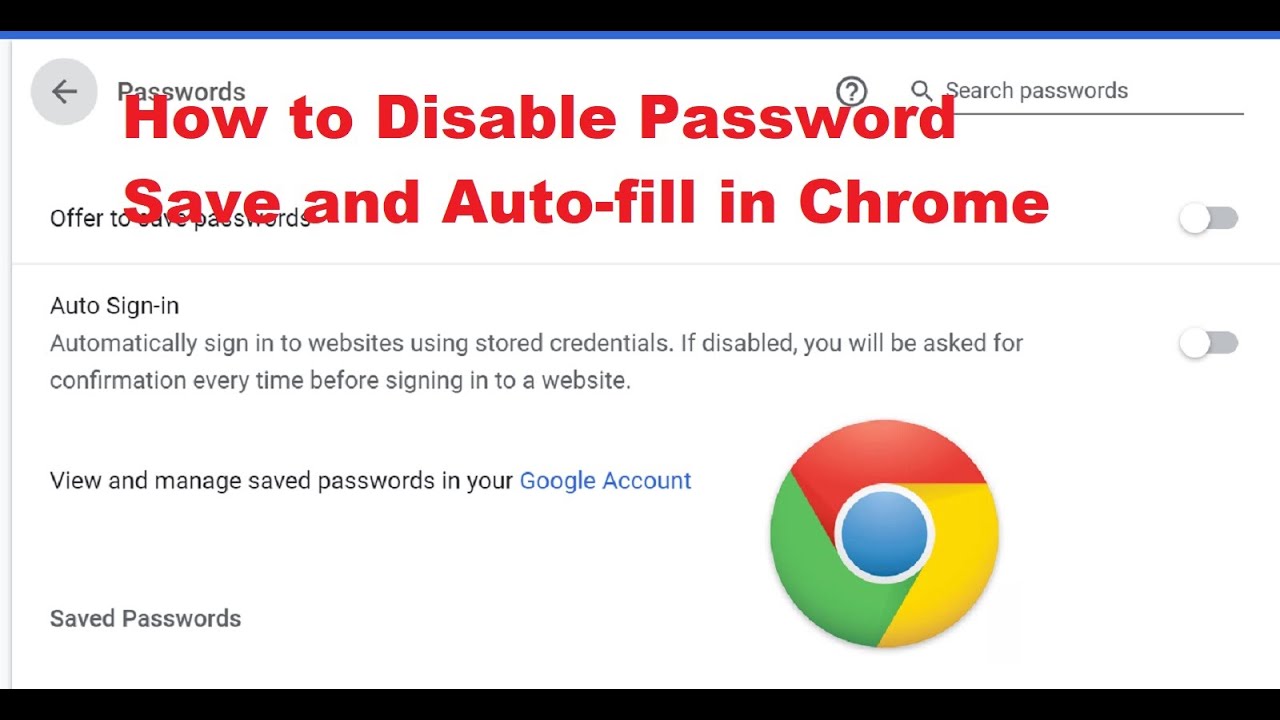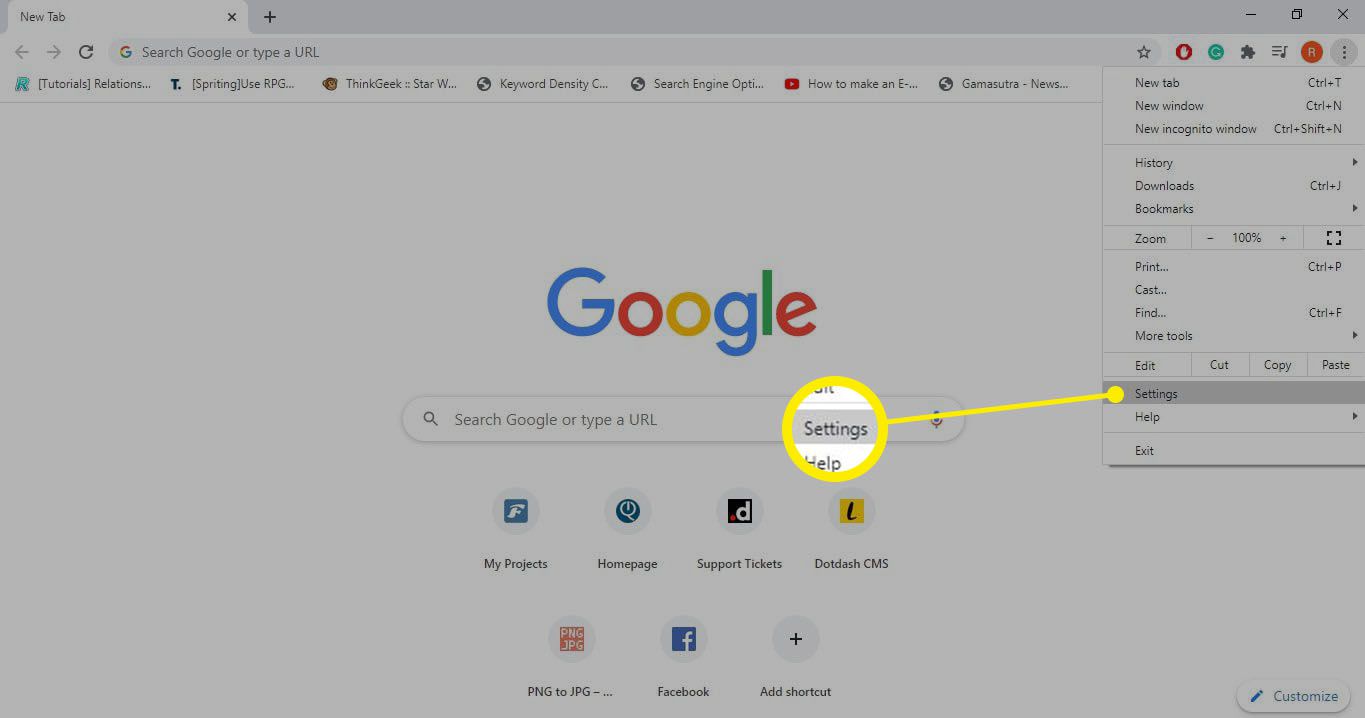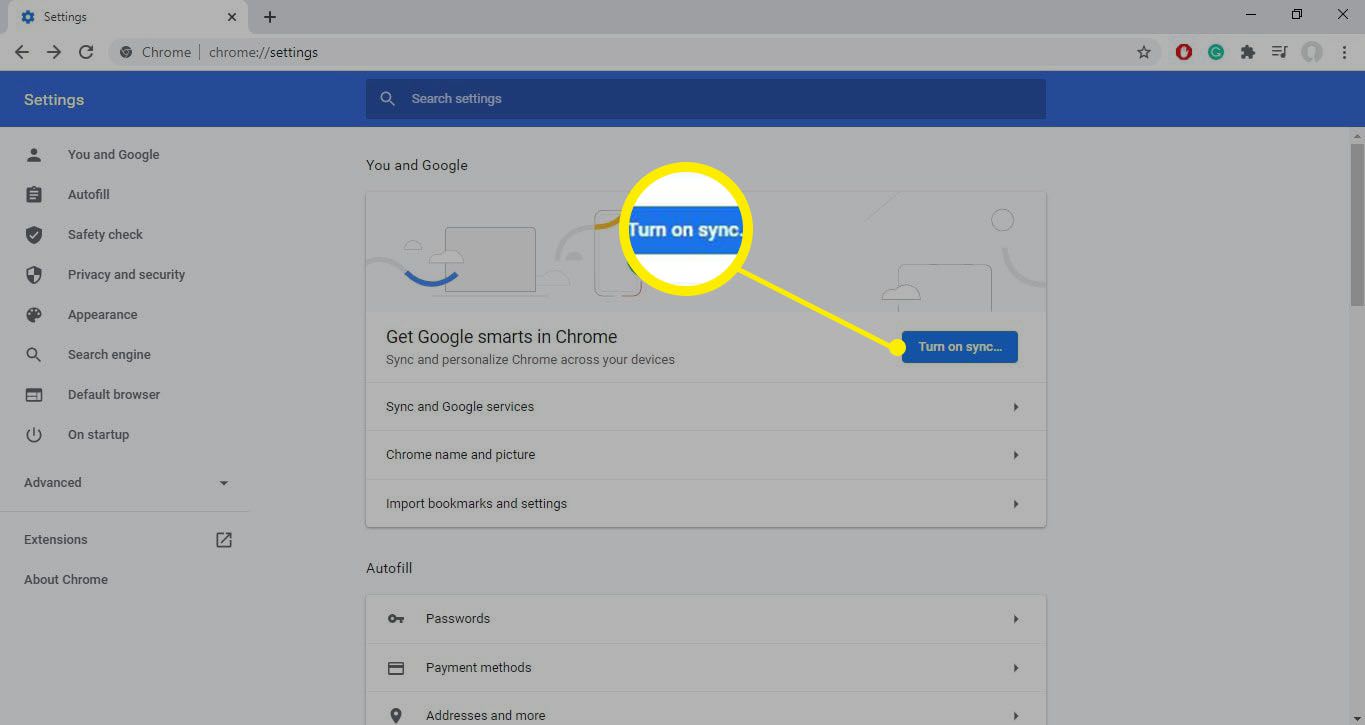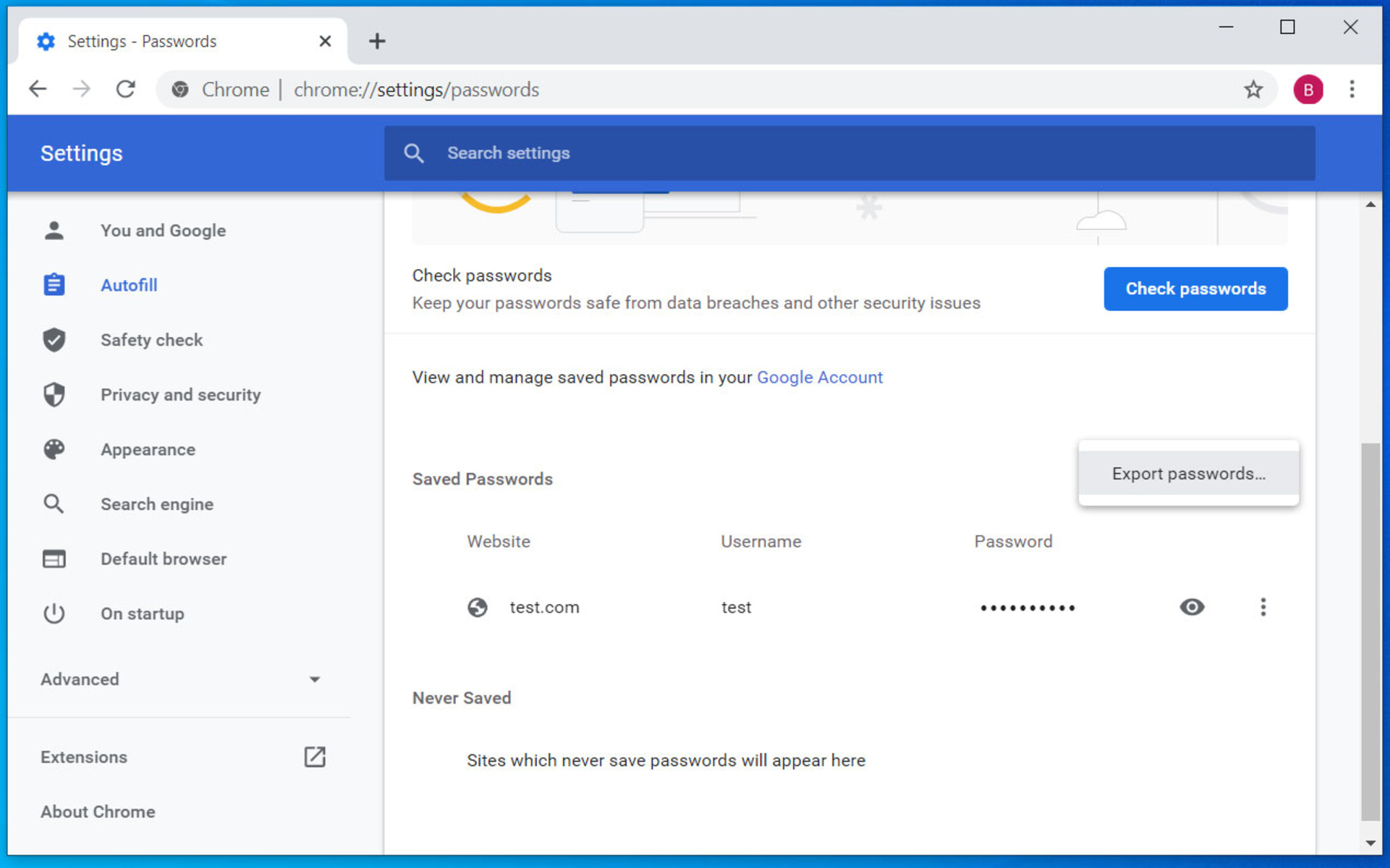Introduction
Chrome's built-in password manager is a convenient feature that securely stores and auto-fills your login credentials for various websites. While this can be a time-saving tool, some users may prefer to manage their passwords through other means or simply disable the feature for privacy or security reasons. If you find yourself in this category, you'll be pleased to know that turning off Chrome's password manager is a straightforward process.
In this guide, we'll walk you through the steps to disable the Chrome password manager, allowing you to take control of your online security and privacy preferences. Whether you're transitioning to a dedicated password manager or prefer to manually enter your login details, this tutorial will empower you to make the necessary adjustments to suit your individual needs.
By following the simple instructions outlined in the subsequent steps, you'll gain a clear understanding of how to navigate Chrome's settings and locate the password management feature. With this knowledge, you'll be able to confidently disable the built-in password manager, giving you the freedom to explore alternative password management solutions or opt for manual entry of your login credentials.
Let's embark on this journey together and discover the steps to turn off Chrome's password manager, empowering you to take charge of your online security and privacy preferences.
Step 1: Open Chrome Settings
To begin the process of turning off Chrome's password manager, you'll first need to access the browser's settings. This can be easily accomplished by following the steps outlined below:
-
Launch Google Chrome: Open the Chrome browser on your computer or laptop by clicking on the Chrome icon located on your desktop or in the taskbar. Alternatively, you can access Chrome from the Start menu or applications folder, depending on your operating system.
-
Access the Menu: Once Chrome is open, look to the top-right corner of the window for the three vertically aligned dots, which represent the Chrome menu. Click on these dots to reveal a dropdown menu containing various options and settings for the browser.
-
Navigate to Settings: Within the dropdown menu, locate and click on the "Settings" option. This will redirect you to the Chrome Settings page, where you can customize and manage a wide range of browser features and preferences.
-
Explore Advanced Settings (Optional): For users who may require advanced settings, you can further navigate to the bottom of the Settings page and click on "Advanced" to reveal additional options. However, for the purpose of disabling the password manager, this step is not mandatory.
By following these simple steps, you'll successfully access the Chrome Settings, setting the stage for the subsequent actions required to turn off the password manager. With the Settings page now at your disposal, you're ready to proceed to the next step and delve into the process of accessing the password management feature within Chrome.
Now that you've successfully opened Chrome Settings, let's move on to the next step and continue our journey towards disabling the Chrome password manager.
Step 2: Access Passwords
After successfully navigating to the Chrome Settings, the next crucial step in the process of turning off Chrome's password manager is to access the passwords section. This is where you'll gain visibility into the stored login credentials and have the ability to manage the password manager settings. Follow the detailed instructions below to seamlessly access the passwords feature within Chrome:
-
Locate the Autofill Section: Within the Chrome Settings page, scroll down until you find the "Autofill" section. This is where you can manage various autofill options, including passwords, payment methods, and addresses.
-
Click on "Passwords": Under the Autofill section, you'll find the "Passwords" option. Click on this to access the password management settings. Upon clicking, you'll be directed to the Passwords page, where you can view and manage the saved login credentials for different websites.
-
View Saved Passwords: Once you're on the Passwords page, you'll see a list of websites for which Chrome has saved your login information. Each entry typically includes the website's URL, your username or email associated with the account, and an option to reveal the saved password.
-
Explore Additional Options (Optional): Chrome also provides additional options within the Passwords page, allowing you to export saved passwords, enable or disable the built-in password manager, and manage exceptions for specific websites.
By following these steps, you'll successfully access the passwords section within Chrome, gaining insight into the stored login credentials and the associated management options. With this accomplishment, you're now prepared to proceed to the next pivotal step in the process of turning off Chrome's password manager.
With the passwords section now accessible, you're one step closer to taking control of your password management preferences within Chrome. Let's move forward to the subsequent step and continue our journey toward disabling the Chrome password manager.
Step 3: Turn Off Chrome Password Manager
Now that you have successfully accessed the passwords section within Chrome, you're ready to proceed with the pivotal step of turning off the Chrome password manager. This step empowers you to take control of your online security and privacy preferences, allowing you to explore alternative password management solutions or opt for manual entry of your login credentials.
To disable the Chrome password manager, follow the detailed instructions below:
-
Disable Offer to Save Passwords: Within the Passwords page, you'll find the option to "Offer to save passwords." Toggle off this setting to prevent Chrome from prompting you to save passwords for future logins. This action ensures that Chrome's password manager no longer captures and stores new login credentials as you browse the web.
-
Disable Auto Sign-in: Chrome offers the convenience of automatic sign-in to websites for which you've saved passwords. To disable this feature, navigate to the "Auto Sign-in" option within the Passwords page and ensure it is turned off. By doing so, you prevent Chrome from automatically signing you in to websites using the saved credentials, giving you full control over your login process.
-
Review and Remove Saved Passwords: Take a moment to review the list of saved passwords within the Passwords page. For each entry, you have the option to view the saved password and remove it from Chrome's storage. This step allows you to declutter your saved passwords and maintain a clear overview of the login credentials stored within the browser.
-
Disable Password Manager: In the advanced settings of Chrome, you have the option to disable the built-in password manager entirely. By accessing the advanced settings and navigating to the "Passwords" section, you can toggle off the option to "Offer to save passwords" and "Auto Sign-in," effectively deactivating the password manager feature.
By following these steps, you'll successfully turn off the Chrome password manager, reclaiming control over your password management preferences. Whether you choose to transition to a dedicated password manager or prefer manual entry of your login credentials, this process empowers you to align Chrome's behavior with your individual security and privacy preferences.
With the Chrome password manager now disabled, you've taken a significant step towards customizing your browsing experience and enhancing your control over online security. Congratulations on successfully turning off the Chrome password manager, and feel free to explore alternative password management solutions that best suit your needs.
Conclusion
In conclusion, the ability to turn off Chrome's password manager provides users with the flexibility to tailor their online security and privacy preferences according to their individual needs. By following the step-by-step guide outlined in this tutorial, you've gained valuable insights into the process of accessing Chrome's settings, navigating to the passwords section, and ultimately disabling the built-in password manager.
With the Chrome password manager now turned off, you've reclaimed control over how your login credentials are managed, empowering you to explore alternative password management solutions or opt for manual entry of your passwords. This newfound control not only aligns Chrome's behavior with your preferences but also enhances your overall browsing experience by allowing you to make informed decisions about your online security.
Furthermore, by disabling the Chrome password manager, you've taken a proactive step towards strengthening your security posture. This action reduces the reliance on a single browser-based password management solution, providing the opportunity to explore dedicated password managers that offer advanced features such as secure password generation, encrypted storage, and multi-device synchronization.
In the ever-evolving landscape of cybersecurity, the ability to customize and optimize your approach to password management is paramount. By turning off Chrome's password manager, you've demonstrated a proactive stance in safeguarding your digital identity and sensitive information.
As you continue your journey through the digital realm, remember that the decision to disable the Chrome password manager is just one aspect of a comprehensive approach to online security. It's essential to complement this action with other best practices, such as using strong, unique passwords for each online account, enabling two-factor authentication where available, and staying informed about emerging cybersecurity threats.
In essence, the process of turning off Chrome's password manager is a pivotal step in taking charge of your online security and privacy. It empowers you to make informed choices about how your login credentials are managed, ultimately contributing to a more secure and personalized browsing experience.
Congratulations on successfully turning off the Chrome password manager, and may your newfound control over password management pave the way for a safer and more empowered digital journey.

























